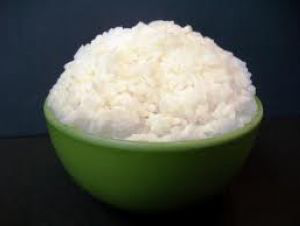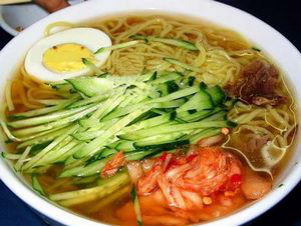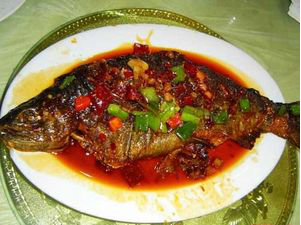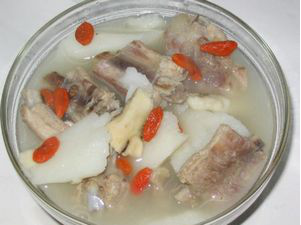APPLICATION
EMPLOYMENT
STUDENT LIFE
FEES & FUNDING
LIVING IN ZHENGZHOU
ANNOUNCEMENT
Food
ZZU provide a variety of foods to cater international students.On campus you will find a number of places to get food and drink and meet with friends. From canteens to restaurants to quick cafeteria shops, we hope you will find a place to cater for your needs.
If you end up choosing to live in Pine Park or Lotus Park, you will find there are India restaurants for international students in your accommodation building. They are run by chefs from India, and serving typical Indian foods with original India flavor.
International students also can cook by themselves if the foods served on all campus are not satisfactory. There are small kitchens in accommodation buildings with simple facilities, where students can reward self with their own delicious food.
Students can use their Campus Card to pay for all meals as well as other items they need on campus.
We have a strong commitment to green issues and cutting our carbon footprint. The University and the Students Union are both proud to support and promote “Guang Pan”(No Wasting) activity.
Download: A bite in ZZU
What Do Chinese People Eat
Rice

Rice is the staple food of Chinese people in everyday meals.
China is the world’s largest rice producer, and one of the earliest centers of rice cultivation. For thousands of years, the Chinese people have been diligently cultivating their land for favorable harvests. The agricultural way of life, with rice as the center, has played an important role in China’s history. In the past, people held the belief that the precious things of life are the five grains with rice being number one, instead of pearls or jade.
For the Chinese people, rice is the staple food in everyday meals. They eat it as Westerners do with bread. Rice is cooked by boiling or steaming, till it absorbs as much water as it can.
There is a rich collection of rice dishes in China. Among them, fried rice might be the most popular not only in China, but also around the world. Depending on the types and amount of added ingredients, such as beans, chopped meat, vegetables, eggs, etc., as well as different manners of preparation, there have developed endless variations of fried rice.
Rice may also be made into rice porridge (congee). When cooking porridge, more water than usual is added to make the rice saturated with water and become very soft and viscous. It is often served and eaten with pickles, bamboo shoots, salted duck eggs, pickled tofu and many other condiments. Besides a common food on the dining table, rice porridge can also serve as food therapy for the unwell by adding ingredients of therapeutic value.
Noodles
Noodles are a staple food in Chinese cuisine, with a long history and wide popularity. Its first appearance can be traced back to the East Han Dynasty (25 – 220 AD), and it became very popular during Song Dynasty (960 – 1279 AD). Its cooking methods are numerous, though relatively simple. People can, according to their likes and tastes, add different ingredients and materials to make a great variety of noodles.
Chinese noodles vary in width. They can be thin as needles, or thick as chopsticks. However, when it comes to length, they are usually served long and uncut. This is because long noodles are a symbol of longevity in Chinese tradition. Thus, during birthday celebrations, people will serve “longevity noodles” in good hope for longevity.

Cold Chinese Noodles are gradually gaining popularity among more and more people.
Because of different methods of preparation and use of materials and ingredients, there are over a thousand types of noodles from all over China with local characteristics. Among them, the most famous ones are soy bean paste noodles (or Zhajiang Mian) in Beijing, hand-pulled noodles (or Lamian) in Shaanxi Province, sliced noodles (or Daoxiao Mian) in Shanxi Province, dandan noodles (or dandan mian) in Sichuan Province, to name just a few.
Noodles are served and eaten hot or cold, boiled, steamed, stir-fried, deep-fried, or served in soup. Whichever way, you’ll first need to, using chopsticks, stir the noodles till all the materials are evenly mingled before enjoying it. Noodles are an excellent food for the nutritionally-inclined, providing harmonious dietary balance. They are low in calories, and high in protein and carbohydrate.
The most famous noodles dishes include Guilin Rice Noodles (see Guilin food), Guangzhou Shahefen (see Guangzhou food), and Lanzhou Hand-Pulled Noodles, one of the most popular muslim dishes in China.
See Chinese noodle dishes menu.
Vegetables
Vegetables are, in general, the second most fundamental part of Chinese cuisine, after the staple rice. Chinese people are fond of vegetables, especially leafy greens, and eat many different kinds at almost every meal, sometimes preserve and eat them as snacks.
Many commonly used vegetables in Chinese meals are familiar to Westerners, such as cabbages, mushrooms, peas and beans, all leafy greens, chili peppers, onions, carrots, celery, broccoli, bamboo shoots , gourds, etc.
Chinese people prefer cooked vegetables rather than raw. Vegetables are cut into thin strips or small pieces, cooked with meat, tofu, fish, seafood or noodles. They can also be used in soups, braises, or as stuffing for dumplings, wontons, and steamed bums.
Besides, people like to make vegetables into pickles. A huge variety of pickled vegetables are made, such as cucumber, cabbage, turnip, chili pepper, among many others. Pickles have a refreshing and savory taste, so they are often served as appetizers in a meal.
Read Chinese vegetarian dishes menu
Eggs
China has a large consumption of eggs each year. People consume eggs laid by many poultries; the most common ones are chicken, duck, goose, pigeon, and quails.
Food savvy Chinese people make lots of dishes out of eggs. The most unique and famous ones are probably the salted duck eggs and century eggs (preserved eggs), both are produced and eaten all over China.
Salted duck eggs are made of fresh duck eggs, by soaking in brine for about one month till the yolk becomes bright orange-red color, and the salty flavor is absorbed.
People make century eggs with duck, chicken or quail eggs. Eggs are soaked in a mixture of ash, salt, lime, clay and rice straw for several weeks or months, depending on different processing methods, till the white becomes a dark-brown transparent jelly, while the yolk becomes a cream-like, dark-green substance. The eggs smell a strong odor of sulphur and .
In Chinese, the pronunciation of egg, dan, sounds similar to dai, which means generation. Eggs represent rebirth and fertility in traditional view. When two people get married, when a baby is born, at the baby’s first-month birthday, and some other joyous occasions, red-dyed eggs are passed out as auspicious gifts. They represent hope, happiness, and carrying on the family line by having babies.
Fish

Braised Fish in Brown Sauce is one of the most popular fish dishes loved by Chinese people.
Fish is eaten through out the coastal areas as well as the inland parts of China. During festivals or celebrations, fish is an essential dish at family dinner table. Fish is so important in Chinese food culture is because it is considered a symbol of abundance and prosperity.
In Chinese, the pronunciation of fish, “yu”, sounds the same with the word for abundance, richness, or surpluses, and it is believed that eating fish will bring prosperity in the coming year. Therefore, in China, especially at banquets, it is customary to serve the entire fish, with the fish head pointing towards the honored guest. Fish if one of the indispensable courses of the Chinese New Year feast.
Popular fish and shellfish include carp, grass carp, crucian, sea bass, squid, soft-shell turtle, crab, shrimp, prawn, scallops, oysters, etc.
The cooking of fish is a delicate matter. At many Chinese restaurants, a new cook is tested by cooking fish, and a restaurant is often known by the chef’s skill in cooking fish. The ancient Chinese philosopher Laozi even said "Governing a great nation is like cooking a small fish."
Tofu (Bean Curd)
Tofu, or literally translated as bean curd, is a food of Chinese origin. It is made from soy milk, water and a curdling agent. The production of Tofu from soy milk is similar to that of cheese from milk. It is made by coagulating soy milk, then pressing the resulting curds into blocks.
Tofu contains little fat, and is high in protein, calcium and iron. Tofu itself has very little flavor or smell, but it has the ability to absorb new flavors through spices and marinades. Due to this quality and nutritional value, Tofu, a staple of Asian cuisines since ancient times, has recently become a popular material used in Western vegetarian dishes.
There is a wide variety of tofu, which can be split into two main categories: fresh tofu – produced directly from soy milk, and processed tofu – processed in some way from fresh tofu.
Meat and Poultry
Chinese people basically eat all animals’ meat, such as pork, beef, mutton, chicken, duck, pigeon, as well as many others. Pork is the most commonly consumed meat, and it appears almost in every meal. It is so common that it can be used to mean both meat and pork.
Every part of the animal can be eaten, be it meat, skin, fat, blood, or entrails. People even joke that, speaking of pig’s meat, every part of the pig can be eaten, and nothing is wasted, except for the oink.
Chinese people rarely eat any raw meat. They prepare and cook meat in various ways. All meat can be boiled, stir-fried, stewed, roasted, poached, baked, or pickled, etc.
The most famous dish might be Beijing Roast Duck. It has been prepared since the imperial era, and is considered as one of China’s national foods. The duck is served with pancakes, cucumber, spring onions and hoisin sauce (seafood paste).
Soup

Chinese Yams and Pork Soup is a kind of healthy dish, which can help digestion.
The history of soup might be as old as the history of cooking. Chinese soup has been an important part of Chinese food culture for a long time. It is considered to be one of the most nutritious and digestible food types.
Since in China, soups are eaten as one of the main dishes in a meal, particular attention is attached to the soups’ stocks. Meat, bones, eggs, marine products, vegetables, fruits, crops and edible fungus are used.
There is a wide variety of Chinese soup; however, it can be generally characterized into two main categories: Thin soups – made with clear broth and cooked quickly; thick soups – cooked more slowly with all the stocks added together at once, and often starches are added as a thickener near the end of the cooking process.
It’s an ancient tradition to treat a cold or fever with soup. In addition to its ability to comfort, it is believed that certain soups have healing powers. Many soups are consumed for their flavor, as well as for their restorative or invigorating effects. This is heavily linked with traditional Chinese medicine. There are varieties of such tonic soups, ranging from pungent to light, savory to sweet flavors.
